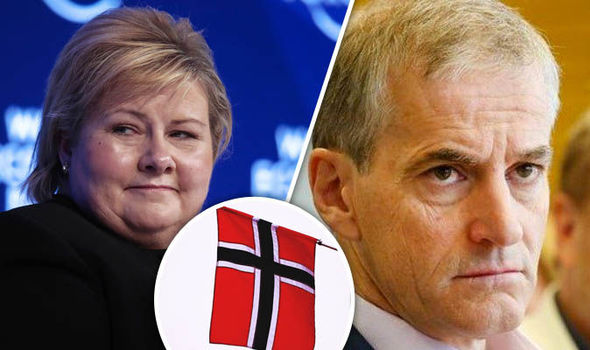 What’s the story?
What’s the story?
Norway goes to the polls on 11 September to decide whether the outgoing Conservative prime minister, Erna Solberg, or her Labour rival, Jonas Gahr Støre, will lead the country for the next four years.
The contest looks too close to call, with Solberg’s rightwing bloc of parties and Støre’s leftwing opposition grouping neck-and-neck. The scores of a half-dozen smaller parties that could end up as kingmakers will be critical.
How does the system work?
The country of 5.2 million people uses a modified proportional representation system in which 150 MPs in the 169-seat storting, or parliament, are directly elected by constituencies.
The remaining 19 so-called “levelling” seats – one for each of Norway’s counties – are distributed proportionately to parties that clear a 4% vote threshold so their final seat tally fairly reflects their share of the national vote.
What happened last time?
The economically liberal, centre-right Conservatives with their 48 MPs have governed since the 2013 election in a minority coalition with the populist, anti-immigrant Progress party (29), backed in parliament on a confidence and supply basis by the socially conservative Christian Democrats (10)and centrist Liberals (nine).
In opposition are the social democrats of Labour (55), which finished as largest party four years ago but was unable to form a ruling coalition, the agrarian Centre party (10), the Socialist Left (seven) and the Greens (one), who made their debut in the storting.
Where are we now?
On the right, promising stability plus further tax cuts and helped by an economy recovering nicely from the 2014 oil price collapse that hit Norway hard, Solberg’s Conservatives are polling at between 24 and 25%.
Their Progress party partners are on 15 to 16%, their core support reinforced by the 2015 migrant crisis and the withdrawals the government made from Norway’s near trillion-dollar sovereign wealth fund during the economic downturn. The Christian Democrats are on five to 6% and the Liberals on four to 5%.
On the left, economic growth and falling unemployment have undermined Labour’s key call for greater equality and seen its support fall 37% in January to between 26 and 27% now. Its potential allies are faring better. The Centre party is on nine to 11%, the Socialist Left on 6% and the fast-growing Greens on four to 5%.
The stage is set for a nail-biter, and negotiations to form a government with reliable support in parliament could prove equally fraught.
